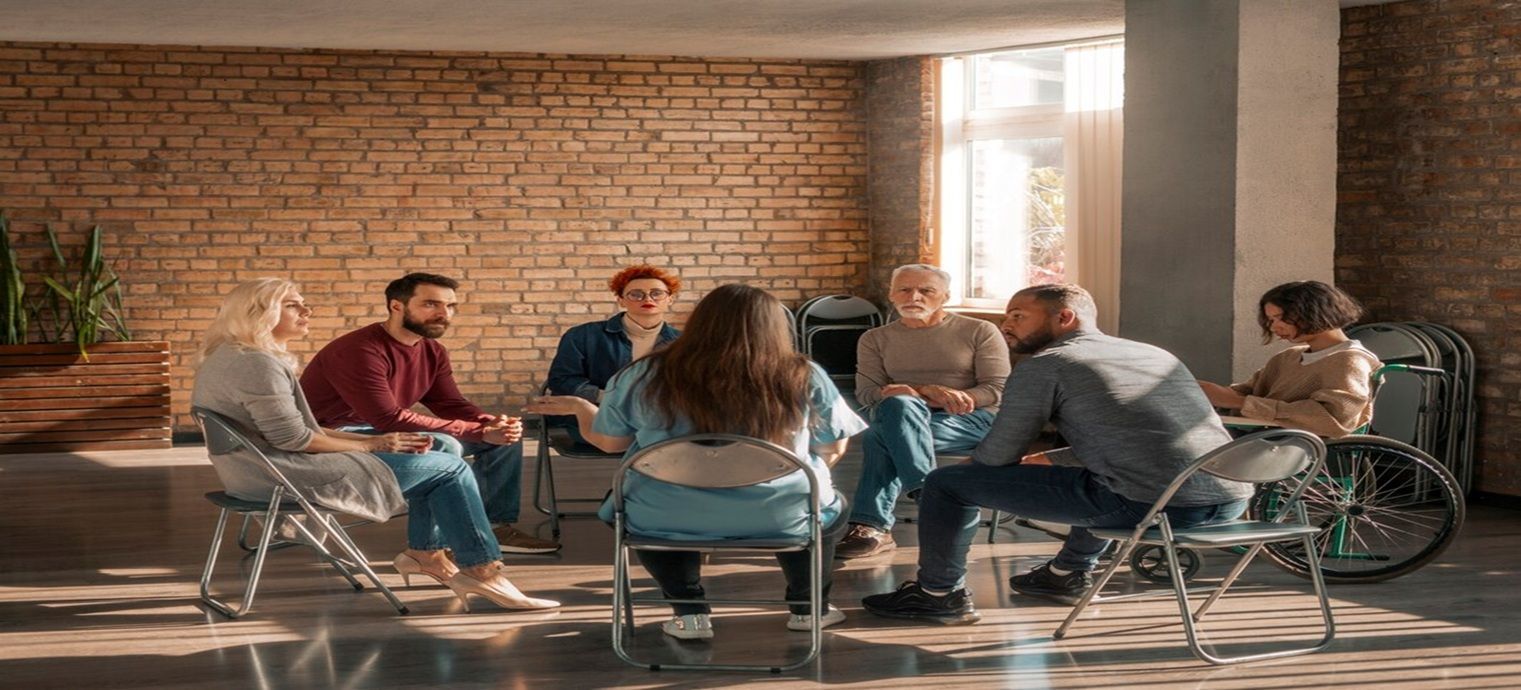The Role of Halfway Houses in Sustaining Long-Term Sobriety
Transitioning from inpatient addiction treatment to independent living is a pivotal stage in the recovery journey. For many, this period is filled with uncertainty, vulnerability, and a heightened risk of relapse. Halfway houses-also known as sober living homes-play a crucial role in bridging this gap. By offering structured living, sobriety support, and a strong recovery community, halfway houses empower individuals to sustain long-term sobriety and successfully reintegrate into society.
In Fort Worth, halfway houses like Anew Vision provide tailored support for those seeking a fresh start and a solid foundation for lasting recovery.
The Value of Halfway Houses in Recovery
Halfway houses serve as a safe, structured environment for individuals leaving inpatient treatment. Unlike returning immediately to independent living, residents benefit from a supportive setting where accountability, routine, and peer encouragement are prioritized. This transitional step is proven to improve recovery outcomes, reduce relapse rates, and foster the development of essential life skills.
“Halfway houses…are vital in recovery. They offer the ideal environment to transition from rehab to regular living.”
Let’s explore how halfway houses support sustained sobriety through five key benefits, with practical examples and internal resources to guide your next steps.
Structured Living: Building a Foundation for Recovery
One of the primary advantages of halfway houses is their structured environment. Residents follow daily schedules that include chores, curfews, group meetings, and therapy sessions. This structure replaces the chaos of addiction with stability and predictability, which are essential for early recovery.
Example:
A resident at Anew Vision in Fort Worth may start their day with a morning meditation, attend a group therapy session, participate in job skills training, and complete assigned household responsibilities. This routine not only keeps them engaged but also minimizes idle time-a common trigger for relapse.
Sobriety Support: Accountability and Peer Encouragement
Halfway houses foster a culture of accountability. Residents are required to maintain sobriety, often verified through regular drug and alcohol screenings. House managers and peers provide ongoing support, encouragement, and gentle reminders to stay on track.
Example:
If a resident feels tempted to use, they can reach out to a house manager or attend an on-site support group. Peer support creates a sense of belonging and mutual responsibility, making it easier to share struggles and celebrate milestones.
Reintegration: Developing Life and Social Skills
Reintegration into society is a major challenge after inpatient treatment. Halfway houses offer life skills training-such as budgeting, cooking, job searching, and conflict resolution-to help residents become self-sufficient and confident.
Example:
A resident may receive assistance with resume writing and interview preparation, participate in financial literacy workshops, or learn how to manage daily responsibilities. These skills are vital for long-term independence and confidence.
Recovery Community: Building Connections and Reducing Isolation
Isolation is a significant risk factor for relapse. Halfway houses provide a built-in recovery community where residents share experiences, offer encouragement, and hold each other accountable. Group activities, 12-step meetings, and communal living foster camaraderie and reduce feelings of loneliness.
Example:
Residents at Anew Vision regularly participate in group outings, recovery meetings, and community service projects. These activities strengthen bonds and reinforce the shared commitment to sobriety.
Relapse Prevention: Sustaining Long-Term Sobriety
Research shows that halfway houses significantly reduce relapse rates compared to independent living. According to the Substance Abuse and Mental Health Services Administration (SAMHSA), 60-80% of individuals who complete halfway house programs report maintaining sobriety after a year. The combination of structure, support, and gradual independence is key to this success.
Example:
Residents at Anew Vision are encouraged to stay for at least 90 days, as studies indicate that longer stays are associated with higher rates of sustained recovery. Ongoing access to counseling, peer support, and relapse prevention education helps residents navigate challenges and maintain their progress.
Why Choose Anew Vision? The Fort Worth Advantage
Anew Vision stands out among Fort Worth halfway houses for our personalized approach, compassionate staff, and commitment to each resident’s long-term success. We offer:
- Tailored programs: Individualized recovery plans, life skills training, and employment assistance.
- Experienced team: Licensed professionals and peer mentors who understand the challenges of early recovery.
- Strong local network: Partnerships with Fort Worth employers, treatment providers, and community organizations.
- Safe, welcoming environment: Modern, comfortable homes in supportive neighborhoods.
Choosing Anew Vision means joining a recovery community dedicated to your growth, healing, and independence.
Frequently Asked Questions (FAQ)
Who is eligible for a halfway house?
Eligibility typically includes completion of an inpatient or residential treatment program, a commitment to sobriety, and willingness to follow house rules. Some homes accept individuals with co-occurring mental health conditions or those reintegrating after incarceration.
How much does it cost to stay in a halfway house?
Costs vary by facility and location. In the U.S., the average annual cost is about $2,900, but this may be higher in metropolitan areas. Many halfway houses are privately funded, while some receive government support. Financial assistance or sliding-scale fees may be available-contact us for details.
Does insurance cover halfway house stays?
Coverage depends on your insurance plan and the facility. Some halfway houses accept insurance, while others are self-pay. It’s important to check with both the facility and your insurance provider. For more information, visit the SAMHSA Insurance and Payment guide.
What rules do residents need to follow?
Common rules include maintaining sobriety, participating in house meetings, completing chores, adhering to curfews, and respecting other residents. Violations can result in warnings or discharge. Each halfway house may have additional policies regarding visitors, employment, and participation in recovery activities.
What kind of support is available?
Residents receive support through counseling, peer groups, life skills training, and access to local resources. Ongoing recovery activities, such as 12-step meetings and job placement assistance, are often included. Many houses also provide connections to outpatient therapy and medical care.
How long can I stay in a halfway house?
The recommended stay is typically 90 days or longer, but some residents may stay up to a year or more, depending on individual needs and progress. Longer stays are associated with better long-term outcomes.
Can I work or go to school while living in a halfway house?
Yes. Most halfway houses encourage residents to seek employment, attend school, or volunteer as part of their reintegration process. Staff can assist with job searches, applications, and scheduling.
Are visitors allowed?
Visitor policies vary by facility. Generally, visitors are allowed during designated hours and must adhere to house rules. All visitors may need approval from staff.
What happens if I relapse while living in a halfway house?
Relapse is treated seriously but compassionately. Depending on the circumstances, residents may receive additional support, be referred to a higher level of care, or, in some cases, be discharged. The primary goal is always to ensure safety and continued recovery.
Take the Next Step Toward Long-Term Sobriety
If you or a loved one is transitioning from inpatient treatment, don’t face the challenges of early recovery alone. Halfway houses like Anew Vision in Fort Worth offer the structure, support, and community you need to build a fulfilling, sober life.
Contact us today to learn more about our programs, schedule a tour, or speak with a recovery specialist. Your journey to lasting sobriety starts here.
Feature Image Suggestions
- A welcoming group of people in a modern, comfortable living room, symbolizing community and support.
- A sunlit exterior of a Fort Worth-style sober living home with residents gathered outside.
- Group therapy or peer support sessions in a home-like setting.
- Images should be high-quality, royalty-free, and reflect the supportive, communal environment of sober living in Fort Worth. Try sources like Unsplash or Pexels.
The Role of Halfway Houses in Sustaining Long-Term Sobriety









